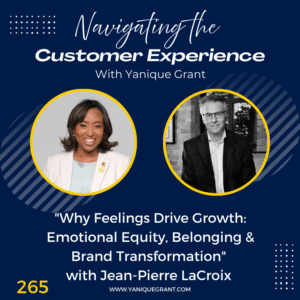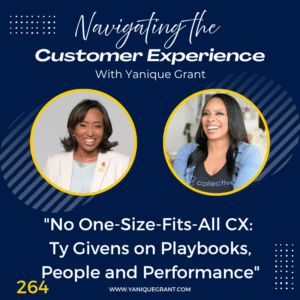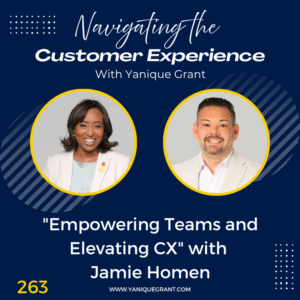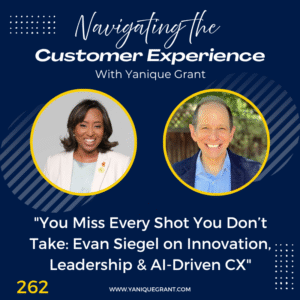Kenneth Bator is the founder of Bator Training and Consulting Inc; he has more than 15 years of experience in helping organizations create environments where employees actually want to come to work and customers want to keep coming back. As a facilitator for training and strategic planning sessions and an expert in brand concept, culture building and management, Kenneth has helped 100’s of organizations since 2001. In additional to his career working with managers and entrepreneurs, he has also served as an executive of 3 different institutions throughout the United States of America and has assisted many small to medium size businesses to reach new levels of effectiveness. Kenneth is the author of The Formula for Business Success = B+C+S, The Pocket Guide To Strategic Planning: The 90-Day Quick Fix For The Business Owner or Manager and The Strategic Planning Workbook and Guide For Financial Institutions, his articles has appeared in many trade publications including the Credit Union Journal, Lifestyle Entrepreneur, CU Business Magazine and ABA Bank Marketing. Born and raised in Chicago, he earned a Bachelor of Science in Finance and an MBA in Entrepreneurship from DePaul University as well as a Certificate in Integrated Marketing from The University of Chicago.
Question
- Tell us a little bit about yourself and your journey
- As a management expert, how do you feel about customer service or customer experience on a global level?
- Your book The Formula for Business Success = B+C+S, B is the brand, C is the culture and S is the strategy. Why do you believe that all of these three things need to be cohesively aligned in order for a business to reap success?
- In your experience as it relates to the brand, the culture and the strategy, what role do you think leadership plays?
- What would be 3 characteristics you believe a leader should have in order to be successful in these 3 areas of brand, culture and strategy?
- What are some important considerations that you would recommend to business owner they take into account moving into the online space in order to be successful?
- What advice would you give an employee or business owner in a business about sustaining a service culture?
- How do you stay motivated every day?
- What is the one online resource, website, tool or app that you absolutely cannot live without in your business?
- What are some of the books that have had the biggest impact on you?
- If you were sitting across the table from another business owner and they said to you that they feel they have great products and services but they lack the constantly motivated human capital, what’s the one piece of advice would you give them to have a successful business, specifically as it relates to constantly motivated human capital?
- What is one thing in your life right now that you are really excited about – something that you are working on to develop yourself or people?
- Where can our listeners find your information online?
- What is one quote or saying that you live by or that inspires you in times of adversity?
Highlights
- Kenneth Bator shared that his journey started with basically getting let go of an executive job, he was the Vice President of Marketing and Business Development for a 4 Billion Dollar Financial Institution in the Chicago area and with a change in executive management came a change in a lot of positions and his was one of the first ones but he decided that instead of going back into corporate life to do what he really loved and enjoyed which is teaching and public speaking and writing and working one on one with a lot of different entrepreneurs and business owners and he loved every minute of it. In a sense, the founding principle that he lives by as well as mentor many college students on is really find out what you love, do what you love and find a way to make a living at that, otherwise, it’s going to be a real uphill climb. He didn’t realize how unhappy he was in the executive job until somebody did him a favor and let him go.
- Kenneth stated that to him Customer Service and Customer Experience are two different things. Customer service is part of the customer experience, you could have customer service and it can be poor service, which means that you’re providing no experience or a very poor experience. A lot of what he teaches centers on that experience itself and he believes it first starts with creating an experience for your employees, it is very difficult to have a positive interaction with your customers if you don’t have employees that really and truly want to be there.
Yanique agreed that customer experience is different because the experience forms everything that they go through; every channel that they are engaging with your business and also, it is before they come in to work with you, so a lot of customers are very informed before they come to your business, with the onset of the internet, they can do their own research, they can look for information on their own, they are 60%-75% informed about what your business offers before they even have an interaction with you or your employees.
Kenneth stated that the example that he usually use, he uses one from his banking day is that customer service is we are going to handle the customer transaction properly and efficiently maybe even wish him/her a nice day and shuffle him/her out of our bank. A customer experience is when we have a line at the teller line, we are going to have somebody come by and offer them water and coffee, we’re going to ask them if there is something we might be able to do for them in an office, we might ask them,”What was your transaction today and what were you trying to accomplish? Maybe there’s another way that we can help you.” That’s an experience, that’s a how do we create a positive environment for our customer rather than just putting them in a line and giving them service and taking care of a transaction.
- Kenneth shared that around the time he was let go in 2001, he started to really delve into a number of different books and even before he was let go and was an executive, he tried to be a sponge and really understand all the nuances of business to take things to the next level, so he’d read a book on reengineering and he’d go to a seminar on empowerment and he would listen to a tape on Six Sigma and he would always think, “How do we put all of this together? How do you apply this? But not just tactically but apply it where it’s in alignment with everything.” Slowly but surely he came up with this brand culture strategy concept in that, “We need to know what is the image we want to create out in the public, we need to know what experience we need to create both through and for the employees and we need to know how to drive more of the right business to our business, brand, culture and strategy.” What he found that was developing in his mind is that he would do work in one area for a client for instance, one client would call him and ask him to do a strategic plan for them and they would do a very in depth written plan but nothing would get executed because their culture, the people weren’t passionate and wouldn’t support it, so the culture was an issue there or somebody would hire him to help them with marketing and build a brand message and they would do an awesome job of that and they would drive more of the right people to their business with that brand and that strategy but maybe the culture wouldn’t provide the main point that the customer experience that was proper, therefore everything falls apart. The same thing goes when you have a great culture where you have a team that’s really engaged and want to work and you have a strategy that makes sense in terms of having the right profit margins and the right product but if you’re not getting your brand message out there properly, you’re like the best kept secret, you’re not getting the people there to work with your business, so if the B or the C or the S isn’t quite right, then your formula is not going to yield the success that your business should have.
- Kenneth shared that leadership in management are different things, he’s a big fan of Dr. Stephen Covey’s work and he talked a lot about that whether it was in The 7 Habits of Highly Effective People: Powerful Lessons in Personal Change or any of his other books. Management is about moving around things and categorizing items but leadership is truly working with people which is a much tougher job, so from a brand, culture and strategy stand point, it really does start with the leader, somebody that understands that we can’t have a positive customer experience without having a positive employee experience and we can’t gain profit from a positive customer experience unless we have the right brand messaging to drive more of those people to our experience. And also so from a strategy stand point, you need a leader who understands that you need to not only just have goals but to have all the tactics and objectives aligned where people understand and can continue to move the organization forward, so leadership is key, without the right leadership and he has seen it too many times even with a great team and a great passionate staff it’s very difficult to have a successful business.
- Kenneth shared that the 3 characteristics a leader should have and the first is one is self-awareness and he can speak for himself as he has a very big ego and a type A personality but being able to step back and being able to say, “I screwed that one up.” “I actually do need to back to my staff and have a little egg on my face and say that one is on me guys, I messed up and maybe I took it out on you as my employee or my staff or my right hand person. Number 1, I apologize, number 2, we’re going, number 3, if you see me do that again then call me on it.” Second is engagement which you can also call involvement, he sees a lot of leaders that maybe have good intentions but they want to do everything themselves, take advantage of the resources that you have you’d be surprised at the things your staff can do even if your running a little ma and pa grocery store, talk to the part-time cashier ask him/her, “What do you think we could do to drive more business to our store?” and you’d be surprised, you’d get some great ideas. The last one is being able to take an airplane view, and he’s guilty of this and this is way he has a consultant for his business because he’s close to it even though he can consult with other people’s businesses but take an airplane view and be able to see how everything is working from above. We get so busy in the tactical, we get so busy in the day to day, “Oh, I have to do the books today, I’ve got to do the inventory today, I’ve got to do employees reviews today.” and you’re bouncing around from one task to the other, the ability to take at least 15 minutes a day from an airplane view and look down is not only critical but also provides some really valuable prospective.
- Kenneth stated that he has a client that wants to take their business online, they are not getting rid of their brick and mortar but they want to engage with their customers online and one of the struggles that they have is that they do have a great culture and they do such a great job of engaging with their customers when they walk through the door, how do we transfer that into online? What they are working on is what does a personal engagement look like online for their customer? Sometimes it’s a matter of asking, “What do you want Mr. Customer?” especially if you have a long time client that you’ve been working with for a long time. What does online business with us look like? What is comfortable to you? For instance, this client is actually looking at ways through their app to actually say, “Hello, Yanique” of “Good morning, Yanique” and to make that online a little more personable. So that’s the big question to ask is, “How can I create a customer experience online that is going to be aligned with how I works with customers today?” It’s not the end all, be all silver bullet but if you start by asking those questions, then you’re automatically on the right track.
- Kenneth stated that for advice on sustaining a service culture and if you’re going to do one thing, implement service standards and don’t just implement service standards, implement service standards from the ground up and what he suggests is get everybody on your front lines, get everybody that works with customers most often and he sees it when a company does merge with another organization and now all of a sudden they have 5 or 6 people that are brand new coming from a completely different environment and they say, “Okay, what do we do with these folks?” if you already have service standards, then he suggests getting everybody in a room and say, “Alright, we are a new team, we are a new family now, these are the service standards that we have, let’s discuss if we need to make an changes, additions or take some these things off. For instance, if we have a service standard that we are going to answer the phone within 3 rings, if we have an operational reason why we can’t adhere to that, then we better take it off or change it or make it 5 rings because it’s written down, it’s a promise.” And if you don’t have service standards then its even better opportunity is to get everybody involved and simply do an exercise and say, “What does service mean to you? What does service look like here? What should service look like?”Kenneth has done those types of exercises dozens and dozens of times and every time he does that, they always get some amazing feedback. Sometimes they get some goofy stuff which is like, “Get more sleep”but sometimes they get some really interesting things which is, “We should be able to solve most problems within 72 hours and we usually do, why don’t we make that a standard and put it in writing that we will resolve all problems within 72 hours and if we can’t, we will call the customer or client within 72 hours to give them an update, let them know what we’re doing and what’s in line for them.” but when you do that and you create the service standards from the ground up and you get people involved then there is instant buy in, now there are service standards, they are your service standards, they are not just one more thing that’s being pushed down from management saying, “Here are your service standards that you need to adhere to everyday.” They are all involved in this and if you’re bring new people on, that’s a great opportunity to either create them or take a new look at the service standards so that you can create that buy in and get every body involve right from the start.
Yanique agreed that they are good points that you definitely need buy in, it needs to have a level of inclusivity that people feel like they are apart of the process because then they are more willing to adhere and to actually own the issue, they don’t feel like it’s information being handed down to them that they have to comply with and it makes the environment that much easier for you to work with because the team members feel like it’s their business and it really is. You spend 90% of time at work.
Kenneth Bator stated that he has seen in some circumstances where if you’ve done this properly in terms of creating the service standards, that there’s even a self-management among the team where one front line worker will tell the other front line worker, “Hey, that’s not how we do things here.” It actually begins to take some of the onus off the leader to continually be that person that cracks the whip, it actually makes things in the best of circumstances run smoother without your involvement as a leader. When you can leave for days and the place runs just as well or better than when you’re there, then you know you’ve done something right.
- Kenneth shared that he’s no different from other people; some days motivation comes easy and other days it doesn’t. Motivation for him is that he loves what he does and he’s really passionate about this brand, culture and strategy alignment concept. On the days when he’s not motivated, sometimes you just have to acknowledge it. He thinks that as entrepreneurs, executives, business owners, a lot of times we just want to push through things and that’s not necessarily bad but sometimes we you just have to acknowledge it like, “Hey, I’m a little off today, I’m not as motivated, I’m not as focused, I’m not necessarily doing backflips over what I need to do today.” And just acknowledging that leads you to a question in your mind of, “What do I need? Maybe I need to go out for a run or maybe I need to have one more cup of coffee or maybe I just need to take a walk around the block.” Sometimes what he’ll do if the task is not coming to him, let switch to another task, maybe instead of working on this client’s strategic plan, let’s put that off until this afternoon and let’s work on a video this morning, let’s work on another project because sometimes that gets your mind going to where you’re little bit more motivated in the day.
- Kenneth shared that the tool he can’t live without in his business is LinkedIn, if they took away Facebook and Instagram and every other app that he has and only left him with one, he would say LinkedIn is his best resource. It’s his best resource for information, he reads a lot of articles from other thought leaders on LinkedIn. He always find really good education on there and he connects with a number of people, there are some clients that he LinkedIn message, they don’t even email because they are on that app. So LinkedIn is number 1.
- Kenneth Bator shared Stephen Covey books has had a huge impact on him especially when he read The 7 Habits of Highly Effective People: Powerful Lessons in Personal Change in the early 2000’s, that number 1. He stated that 2 others that read recently that he has been recommending a lot, one is kind of a oldie but goodie and that’s The E-Myth: Why Most Small Businesses Don’t Work and What to Do About It by Michael Gerber, it’s a really good book on putting together systems and process which we need in every business and not taking away the people aspect. Another one that he read about a year ago that he really liked was All In Startup: Launching a New Idea When Everything Is on the Line by Diana Kander, it’s somewhat of a fictional narrative an entrepreneur who’s struggling but it makes it really fun to read because it is a story but there is a tip with each of the chapters which is really interesting.
- Kenneth Bator stated that the one thing he would say is, “What’s the feedback from your people?” if you truly feel they are not motivated then you have to ask. Sometimes we think it’s rocket science but it isn’t, sometimes it’s just a matter of getting people in the room and asking them really leading questions with the sincerity to listen, “What do you think is going on here? How do you think that we could take our business to the next level?” sometimes that question is a great one because you have some people that have some burning ideas in them but they’re afraid to say it and if you’re not getting the answers by simply asking them face to face then you need to try another way, maybe it’s an anonymous survey or you bring in an expert to do focus groups or something like that because you need to get that feedback, you need to the “Why”. If you’re not seeing the motivated human capital out there amongst your team then you have to get to the “Why”, is it because of the salaries, is it because of the working conditions, is it because of possibly one bad apple on the team that may be a supervisor that is not doing the job properly. You can’t solve the problem until you get the “Why’s” so you have to ask the questions.
- Kenneth Bator shared that the thing that he’s really excited about right now is in the process of putting together a couple of online classes based on the brand, culture, strategy concept that he put together. He have been wanting to do that for a long time because there are people that enjoy the book and there are people who enjoy seeing and hearing him speak but there are some folks that want to learn but don’t necessarily want to hire him has a consultant and he understands that so he’s excited about giving them an option of an online class where they can take that at their leisure and work the brand, culture strategy concept through their unique business. Kenneth stated that his hope is to have it out summer 2017, that might be a little aggressive but now that he have put it out there, then it would more likely to come out this summer.
- Kenneth shared that listeners can find him at –
- Kenneth shared that he has a quote that he sometimes revert to and it’s one that many people have heard before, it’s Albert Einstein’s definition of insanity which is, “Doing the same thing and expecting a different result.” That kind of pops into his head, it’s like a cartoon clown jumping out of a clown car sometimes where actually a voice comes in and saying, “Okay, are we just simply doing the same thing and expecting a different result?” or “Do we need to change at least a little what we’re doing today in order to actually move forward?”
Links
- The Formula for Business Success = B+C+S by Kenneth Bator
- The Pocket Guide To Strategic Planning: The 90-Day Quick Fix For The Business Owner or Manager by Kenneth Bator
- The Strategic Planning Workbook and Guide For Financial Institutions by Kenneth Bator
- The 7 Habits of Highly Effective People: Powerful Lessons in Personal Change by Stephen Covey
- The E-Myth Revisited: Why Most Small Businesses Don’t Work and What to Do About It by Michael Gerber
All In Startup: Launching a New Idea When Everything Is on the Line by Diana Kander




